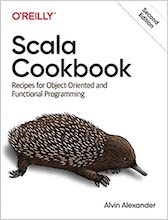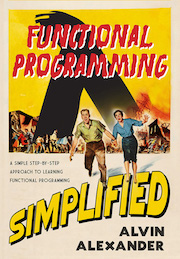|
|
What this is
This file is included in the DevDaily.com
"Java Source Code
Warehouse" project. The intent of this project is to help you "Learn
Java by Example" TM.
Other links
The source code
/*
* Copyright 1999-2004 The Apache Software Foundation
*
* Licensed under the Apache License, Version 2.0 (the "License");
* you may not use this file except in compliance with the License.
* You may obtain a copy of the License at
*
* http://www.apache.org/licenses/LICENSE-2.0
*
* Unless required by applicable law or agreed to in writing, software
* distributed under the License is distributed on an "AS IS" BASIS,
* WITHOUT WARRANTIES OR CONDITIONS OF ANY KIND, either express or implied.
* See the License for the specific language governing permissions and
* limitations under the License.
*/
package org.apache.commons.jxpath.ri.model.beans;
import org.apache.commons.jxpath.JXPathContext;
import org.apache.commons.jxpath.ri.QName;
import org.apache.commons.jxpath.ri.model.NodePointer;
/**
* Used when there is a need to construct a Pointer for a collection element
* that does not exist. For example, if the path is "foo[3]", but the
* collection "foo" only has one element or is empty or is null, the
* NullElementPointer can be used to capture this situation without putting a
* regular NodePointer into an invalid state. Just create a NullElementPointer
* with index 2 (= 3 - 1) and a "foo" pointer as the parent.
*
* @author Dmitri Plotnikov
* @version $Revision: 1.17 $ $Date: 2004/03/25 03:49:50 $
*/
public class NullElementPointer extends CollectionPointer {
public NullElementPointer(NodePointer parent, int index) {
super(parent, (Object) null);
this.index = index;
}
public QName getName() {
return null;
}
public Object getBaseValue() {
return null;
}
public Object getImmediateNode() {
return null;
}
public boolean isLeaf() {
return true;
}
public boolean isCollection() {
return false;
}
public PropertyPointer getPropertyPointer() {
return new NullPropertyPointer(this);
}
public NodePointer getValuePointer() {
return new NullPointer(this, getName());
}
public void setValue(Object value) {
throw new UnsupportedOperationException(
"Collection element does not exist: " + this);
}
public boolean isActual() {
return false;
}
public boolean isContainer() {
return true;
}
public NodePointer createPath(JXPathContext context) {
return parent.createChild(context, null, index);
}
public NodePointer createPath(JXPathContext context, Object value) {
return parent.createChild(context, null, index, value);
}
public int hashCode() {
return getImmediateParentPointer().hashCode() + index;
}
public boolean equals(Object object) {
if (object == this) {
return true;
}
if (!(object instanceof NullElementPointer)) {
return false;
}
NullElementPointer other = (NullElementPointer) object;
return getImmediateParentPointer() == other.getImmediateParentPointer()
&& index == other.index;
}
public int getLength() {
return 0;
}
public String asPath() {
StringBuffer buffer = new StringBuffer();
NodePointer parent = getImmediateParentPointer();
if (parent != null) {
buffer.append(parent.asPath());
}
if (index != WHOLE_COLLECTION) {
// Address the list[1][2] case
if (parent != null && parent.getIndex() != WHOLE_COLLECTION) {
buffer.append("/.");
}
else if (parent != null
&& parent.getImmediateParentPointer() != null
&& parent.getImmediateParentPointer().getIndex() !=
WHOLE_COLLECTION)
{
buffer.append("/.");
}
buffer.append("[").append(index + 1).append(']');
}
return buffer.toString();
}
}
|
 The search page
The search page Other source code files at this package level
Other source code files at this package level Click here to learn more about this project
Click here to learn more about this project
